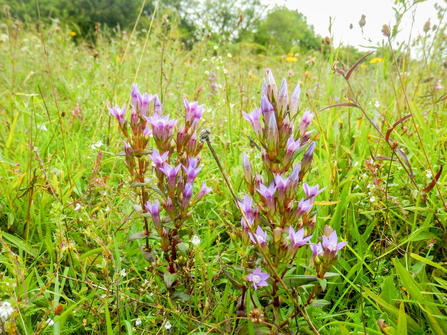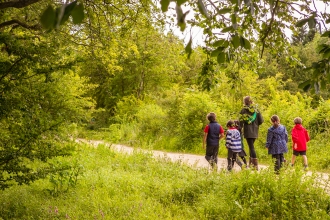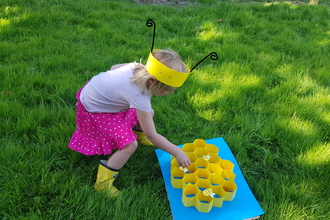
Where to go in September

Ardley Wood Quarry, Oxon
This quarry and nearby railway cutting have geological features of national importance - as well as abundant wildlife. The layered bare limestone rock-faces give a fascinating insight into the site's Jurassic past (more than 160 million years ago). Medieval earthworks give Ardley Wood Quarry archaeological interest, too.
At this time of year, look out for the purple flowers of the autumn gentian usually seen on the quarry floor. The warm, sheltered site is good for late summer butterflies too, which are not deterred by the occasional passing train!
Access: Undulating, mostly firm and flat; steep embankment to south;

Chiltern gentian flowers at BBOWT's Dancersend nature reserve near Aylesbury. Picture: Mick Jones
Dancersend with Pavis Woods, Bucks
This tranquil haven with a rich variety of wildlife is perfect for recharging the batteries! Dancersend, once owned by the Rothschild family, was made a nature reserve in the 1940s in remembrance of Charles Rothschild, the founder of UK nature conservation. Learn more about the fascinating history of the reserve.
Different types of woodland habitats reflect a chequered history. Most of the original woodlands were felled during the Second World War, but in the 1950s, two large woods were replanted with mixed woodland including beech, ash, cherry and oak.
Look out for Chiltern gentians on the areas of chalk grassland along with other late summer flowers and butterflies.
Access: Variable, gentle slopes, bumpy in places; gates; benches. Visitor permit required for 'Water Works' part of reserve. Please contact us on 01865 775476,

Autumn lady's-tresses orchids, Spiranthes Spiralis, by Peter Creed
Greenham and Crookham Commons, Berks
Greenham and Crookham Commons on the southern edge Newbury forms the largest area of lowland heath in West Berkshire.
From late summer to the end of September, when conditions are right, you may see thousands of autumn lady’s-tresses in the grassland at Greenham Common. This small, delicate plant is our latest flowering orchid with white, bell-shaped flowers arranged in a single spiral around the stem. It may be the largest population on a single site in southern Britain.
The best spot to see these beautiful snow-white flowers twirling around soft grey stems is on the short dry turf 100m east of the Control Tower car park. Tread carefully or you’ll squash them!
Access: The main tracks across the common are level and accessible for those with limited walking ability, off-road bicycles and off-road mobility scooters. Other waymarked routes are colour coded and cross varying terrain. Undulating wooded valleys with uneven terrain including steps. Most entrances have 1.5m bridle gates. Height barriers on minor car parks, main car park accessible to larger vehicles or those carrying cycles on the roof.
Homefield Wood by Kate Titford
Homefield Wood, Bucks
Woodland and grassland have existed on this warm slope for at least 200 years, though forestry work has created many changes. The reserve is made up of beech, ash, sycamore and whitebeam with glades and open grassland.
The rich variety of wild flowers that grow here attract butterflies such as the common blue, and silver-washed fritillaries fly along the woodland rides. In late summer look for purple spikes of Chiltern gentians on the grassland.
Access: Undulating; gentle slope, firm paths; gates and hurdles

Red kite by Jon Hawkins/Surrey Hills photography
Oakley Hill, Oxon
Hidden behind the imposing, but now peaceful, chalkpits at Chinnor, Oakley Hill is made up of old downland, scrub and beech woodland. Chalk grassland like this - once common along the escarpment - is now rare due to a decline in grazing and invasion by scrub, but BBOWT is looking after this rarity by using traditional methods.
Chiltern gentian is the star of this beautiful chalk downland reserve in late summer. There are also a few remaining juniper plants here. Once a dependable early coloniser of open grassland, juniper is now uncommon in the Chilterns.
The Ridgeway National Trail passes below the reserve making it ideal to visit as part of a longer walk.
Access: Sloping ground, firm but bumpy; kissing gate

Green tiger beetle by Chris Lawrence
Padworth Common, Berks
Padworth Common nature reserve is a tranquil haven for wildlife. The purple swathes of open heathland are set among a tapestry of ancient oaks, grasslands, ponds and pine trees.
During the summer months the heath buzzes with activity. You may be lucky to see the emerald glint of a green tiger beetle passing along the tracks, or hear the buzzing notes from a bog bush-cricket, crawling among the wet areas of purple moor-grass.
A lovely way to while away half an hour or so is to sit near the main pond on North Common and enjoy the darting dragonflies and damselflies.
Access: Paths on North Common remain relatively dry throughout the year whereas those on South Common are seasonally wet but more level. Terrain is largely flat.





